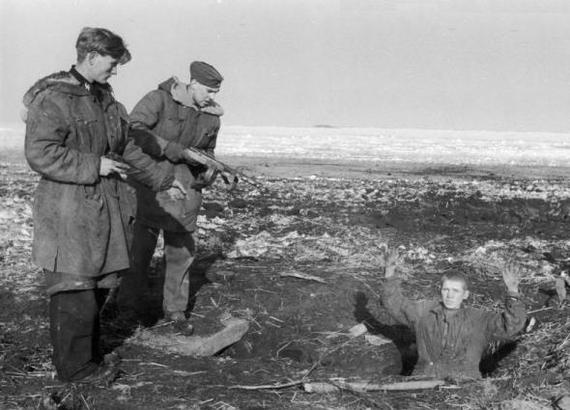
History 05/03/20 In dresses, under the guise of the deaf: how the Soviet Union concealed deserters
In July 1941, the light went out a decree according to which employees of the Special divisions received the right to shoot deserters on the spot. It is not surprising that those who have escaped from the front, so carefully disguised. They are dressed in women’s clothes and a burka, pretending to be a disabled and even wandering together with the Gypsy Tabor.
Desertion during the great Patriotic war
How to write V. N. Stepankov, A. V. Kiselev, and E. P. Sharapov in the publication “the KGB of Stalin”, in July 1941 the GKO USSR bodies of the 3rd Department of the NKO USSR was transformed into the so-called Special departments of the NKVD. The competence of these departments were part of the struggle against espionage and treachery in the red Army and desertion in front-line areas. Special departments were given the right of execution of deserters on the spot. According to the order of people’s Commissar Lavrenty Beria, to deal with the above elements were formed in special departments of divisions and corps infantry platoons, armies separate rifle companies, fronts separate battalions.
According to the data cited in his book “War on the scales of Themis” Vyacheslav Zvyagintsev, in total over the years of the great Patriotic war from the army deserted about 1.5 million people. However, Mikhail Zefirov and Dmitry Degtev on pages of the edition “All for the front?” claim that there were 200 thousand more. And that’s not counting the 2.5 million evaders. According to the charges, and Degteva, the number of deserters got into trouble a million troops, and the executions were sentenced to 150 thousand. However, as noted Zvyagintsev, the number of people shot on the spot no estimates can not be.
Disguise appearance
thanks to law execution on the spot, which was endowed with Special departments deserters were hiding from the authorities carefully. The designthey radically changed appearance. So, S. V. Bilenko, in his book “On the rear guard of the country” writes about that the deserters did not disdain women’s outfits, and in the Asian republics used the burqa. For example, in the publication “Military commentator” (Humanitarian University, 2001) appears one Groshev, who is 2 years hiding from conscription, dressed in women’s dress. And in the book “Theory and practice of Western Ukrainian nationalism in documents of the NKVD, MVD and MGB” N. I. Vladimirtsev mentioned a man who was caught up in the moment when he’s in the veil with the women cultivated wool.
However, those who managed to get fictitious documents according to which they were supposedly deemed unfit for service due to illness, often not concealed. However, such securities were acquired, not all of those who have this “reservation” was not, resorted to disguise. In the reports and performances of participants of scientific-practical conference “Russia in the wars of the XX century” (2001, Adler) there is evidence that escaped from the front the soldiers were very inventive: they pretended to be poor, crippled, and even the deaf. But first, in order to escape from the front, deserters often pretended to be wounded. This fact is written in the book “Bodies of state security of the USSR in the great Patriotic war” S. V. Stepashin and V. P. Yampolsky.
the Change of residence and lifestyle
After escaping deserters usually tried to hide from prying eyes in a safe haven. As the authors of the book “everyday life of the Soviet rear. The life and work of the Soviet people in the great Patriotic war” Dmitry Degtev and Dmitry Zubov, the officers and employees of the assault battalions had found deserters and draft Dodgers in rooms equipped with double walls and outbuildings, underground, attics. A vivid example of what Janis Pinups, which directly deserting from the battlefield, returned home and hid in the dugout, dug in their own ATSAE. However, Pinups never found: he had been in isolation for almost half a century.
A hiding from inevitable retribution in the woods. So, in edition “On both sides of the Karelian front, 1941-1944” (Karelia, 1995) refers to the three deserters, who were discovered in a forest hut. Vladimir Black, whose performance is recorded in the book “Scientific-practical conference “Russia in the wars of the XX century”,” argued that some were hiding from the authorities in the Roma Tabor. Often deserters were banded together in gangs and lived by theft and looting. According to Alexander Severus, the author of the book “Beria”, the gang carried out raids on collective farms and state farms, performed terrorist acts of the party activists, and led campaign activities, calling to evade service in the red Army.
Yulia Popova
Source:
© Russian Seven
Featured articles Share: Comments Comments on the article “In dresses, under the guise of the deaf: how the Soviet Union concealed deserters” Please log in to leave a comment! br>
Share on Tumblr
















